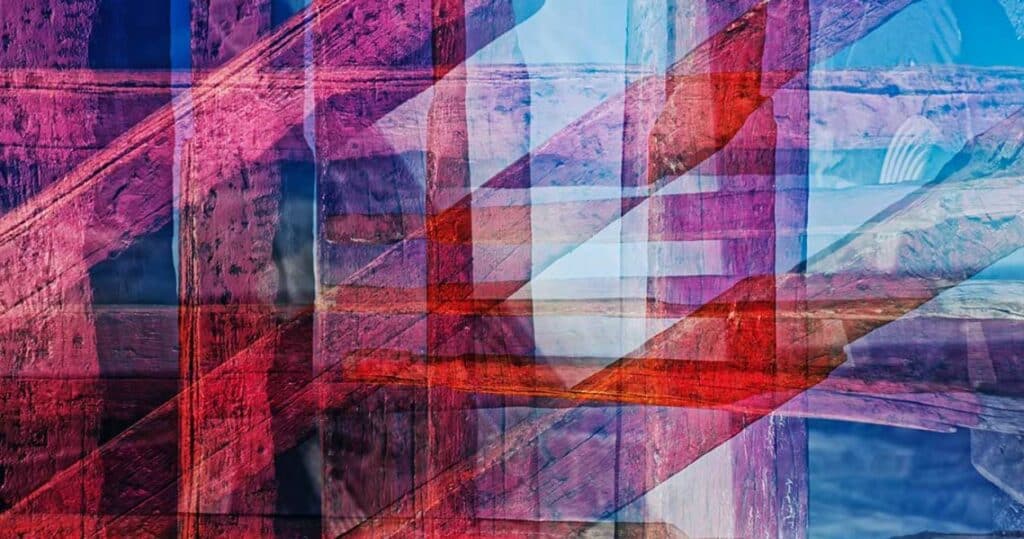This post, “The Art of Anamorphosis: 10 Best Mind-Bending Optical Illusions”, Have fun and look at these cool pictures! Images can fool our eyes and change the way we see things. The name for this kind of work is “optical illusions.” They could be very old, from a very long time ago, or brand new, made by artists right now. We can only say “Wow!” about them.
Anamorphosis is a fancy word for changing the way two views of a picture look from one another. We think it’s magic! Artists have been making things like this for a long time. Watching what they make is always fun. Get ready to be amazed, and let’s have fun as we look at these cool pictures.
Read more: How to Simplify Animation Figures (5 steps)
10 Mind-Bending Optical Illusions That Will Blow Your Mind
Let’s talk about cool pictures that make our eyes work strangely! It looks like something is going on in these pictures, but it’s not. These pictures are made by very smart people who want to show us something fun. People all over the world love to look at these ten cool pictures:
The Ambassadors by Hans Holbein the Younger

Key Aspects:
- Artist: Hans Holbein the Younger
- Technique: Anamorphosis
- Illusion Type: Skull reveals itself from an extreme side angle
In this beautiful shot, there is a head that can’t be seen. There is a certain way to look at it that will allow you to see it. Thanks to their skill, the artist does a great job of making it fit in with the rest of the picture.
This makes the picture more interesting because you have to look for it. When I look at the skull, it makes me think of life and how things can be hidden but still convey meaning. Like a great riddle that makes me think a lot, the picture is kind of like that!
The Café Wall Illusion

Key Aspects:
- Artist: Richard Gregory, Priscilla Heard
- Technique: Simulated slanted lines appearing parallel
- Illusion Type: Distorted perspective creating a baffling visual illusion
I came upon an image that appeared to be a wall featuring tiles that were black and white in colour. The tiles, despite the fact that they are straight, give the impression of tilting or leaning when I gaze at them.
My eyes are having a good time with this trick! When it comes to large photographs or even on the walls of buildings, this trick may be performed. This demonstrates how our sight may occasionally fool us into thinking otherwise.
The Ames Room

Key Aspects:
- Artist: Adelbert Ames, Jr.
- Technique: Manipulation of relative distances and angles
- Illusion Type: Perspective distortion
I feel like I’m in a magical place when I walk into an Ames Room. Things look different than they are. A trapezium, which looks like a funny box on its side, is what the room is really made like. The room looks strange now that this is there!
For instance, someone standing next to me might seem much bigger than someone standing far away, even though they’re the same size. It’s like a big trick that changes the way my eyes see things.
Julian Beever’s Street Art

Key Aspects:
- Artist: Julian Beever
- Technique: Utilizes anamorphosis for depth
- Illusion Type: Invites viewers to step into the art
Hi there! Are there ever drawings on the ground that look like they’re going in or coming out? That’s what an artist named Julian Beever does! He draws cool things on the ground and pavements with chalk.
As you walk outside, you see a big crack in the ground. But when you get closer, you see it’s just a drawing! You might also see a waterfall that isn’t there. Like that, Julian Beever’s art looks like that. It’s really magical!
The Rotating Dancer Illusion

Key Aspects:
- Artist: Nobuyuki Kayahara,
- Technique: Understanding brain’s role in visual interpretation
- Illusion Type: Ambiguous motion illusion
At times, when I watch a dancer spin, it appears as though they are spinning in a variety of various different ways. It could appear as though they are turning right or left, but this is not always the case. The manner in which the dancer moves or appears might cause our minds to get confused. By altering the way they are coloured or standing,
we may give the impression that they are travelling in one direction when, in reality, they are travelling in a different direction. What we perceive could not correspond to what we believe. When it comes to demonstrating how our minds can fool us, this is a really interesting trick!
Hidden 3D Image Stereograms

Key Aspects:
- Artist: unknown
- Technique: Challenges visual perception
- Illusion Type: Stereograms
In the 1990s, a type of art called “magic eye photos,” which use optical illusions, became more and more famous. In a way, these are three-dimensional secret puzzles! We can see that they are a mess of different colours and shapes when we look at them. However, if we focus carefully and cross our eyes a little, we will be able to see a picture that was hidden!
This sound could be caused by anything from a spaceship zipping by to a happy animal splashing in the water. There are times when it seems like the picture is coming to life in front of our eyes. It’s so exciting to discover what’s inside!
Kurt Wenner’s 3D Pavement Art

Key Aspects:
- Artist: Kurt Wenner
- Technique: 3D Pavement Art
- Illusion Type: Creates a lifelike 3D scene on a flat surface
Wenner makes beautiful art on the ground that seems to be rising up from the ground! There are big holes, rivers, and tall buildings that he draws that look real when we look at them from a certain angle.
He’s great at making things look tricky and deep, like they’re not just lying on the ground. We feel like we’re in a magical world when we look at his art. The ground changes into something exciting and moving. His art makes everyone feel like they’re in a cool, new place full of great things to discover!
The Impossible Trident

Key Aspects:
- Artist: Roger Penrose and Oscar Reuters
- Technique: Impossible Object
- Illusion Type: Manipulates depth and perspective
Sometimes our eyes lie to us! Have you ever looked at a picture and thought something in it was real, even though it was just a flat image? You might feel like you could reach out and touch a drawing of a trident that looks so real.
Our brains are really cool because they can trick us into thinking things are real when they’re not. It’s like our brains are having fun by telling us lies that make us happy and shocked.
Felice Varini’s Geometric Graffiti

Key Aspects:
- Artist: Felice Varini
- Technique: Painting fragmented geometric shapes
- Illusion Type: Complete picture from a specific angle
Varni is a famous artist who paints interesting patterns on buildings and walls. When you look at these images up close, they might look like broken pieces. Something amazing does happen though when you take a step back and find the right spot. All of those broken pieces came together properly at once, making a lovely picture.
It’s art is like putting together a puzzle! This fun trick makes us think about how things can look different depending on how we look at them. This turns art into a fun game of how we see things.
The Penrose Triangle (Impossible Triangle)

Key Aspects:
- Artist: Lionel Penrose and Roger Penrose
- Technique: Seemingly 3D Object
- Illusion Type: Paradoxical
There is a fantastic image that is designed to deceive our sight. It seems as though there is a three-dimensional form with three beams laid out close to each other. Guess what, however?
It is not truthful! Due to the fact that it is a shape that cannot actually exist, it is almost like magic. When we look at anything, our eyes fool us into seeing something that is not actually conceivable in the real world. Wow, isn’t it incredible?
Read more: Tips for Nurturing Cultural Awareness
Verdict
The art form of metamorphosis is fascinating since it never ceases to perplex people and ignites their creative juices. These optical illusions serve as a reminder of the ever-expanding limits of human vision as well as the remarkable potential that art possesses to shape the manner in which we perceive the world around us.One thing is clear, regardless of whether you’re investigating historical masterpieces or contemporary interpretations of anamorphosis: the art of anamorphosis provides an unending opportunity to test our visual understanding and engage our imaginations.
Feel free to share this article with your friends on Facebook and Twitter if it helped you learn something. Here’s to continuing to celebrate how art can change our lives and how much it matters to us.
FAQs
Do anamorphic illusions appear in modern art?
Without a doubt! Many contemporary artists are still interested in anamorphosis, mixing it with current technologies and interpretations. Anamorphic street art, digital creations, and interactive installations that push the boundaries of the art form can be found.
Is it possible to make anamorphic art?
Anamorphic art necessitates a thorough understanding of perspective and mathematics. While anybody can try, outstanding results sometimes require much practice and a great eye for detail.
How do anamorphic illusions interfere with our perception?
Anamorphic illusions warp reality and force our brains to make sense of seemingly impossible visual information. This inspires awe and excitement, demonstrating the unlimited possibilities of human creation.





